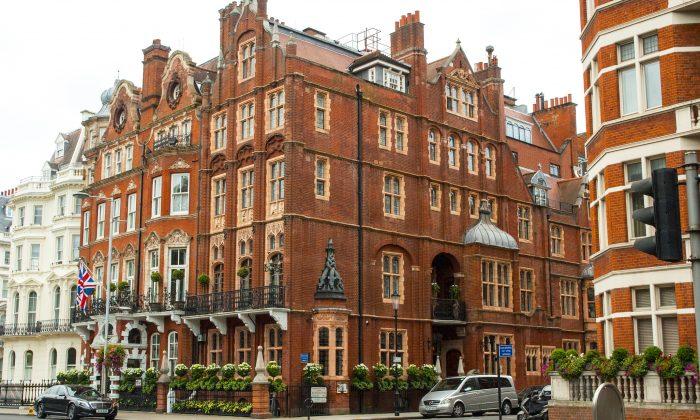Before I visited Belgium for the first time, I associated this tiny land with beer, chocolate, fries, and lace. I knew that it had been a solid centre of European commerce for centuries, although I was very hazy about which cities had prospered as a result.
To my surprise, I learned that the Belgian city of Ypres already had a population of 40,000 in the Middle Ages at a time when Paris had 100,000 people. Ypres was a centre of textile trade and manufacturing in the Belgian area of Flanders, enjoying the same importance as Bruges and Ghent. However, Bruges and Ghent, (best known for their marvellously preserved town centres) today overshadow Ypres when one thinks of ancient, historical Belgian towns.
This may be due to the horrific shelling that Ypres endured in World War I, when the town and region, part of the Ypres Salient, found itself at the centre of the fierce and agonizing trench warfare that characterized war. This is also the area where “In Flanders Fields,” the famous war poem by Canadian surgeon Major John McCrea, was penned in 1915.
Major McRae had just witnessed the death of a friend in the killing fields at a Belgian farm on Allied territory not far from enemy lines. Today, at nearby Essex Farm Cemetery, one can visit the many graves of known and unknown soldiers who perished 100 years ago.
The original concrete blockhouses can be visited, where the many wounded and dying were treated in casualty stations, stretcher rooms, and dressing stations at the location of today’s cemetery. Soldiers from Commonwealth countries like Canada, New Zealand, and Australia are buried here, including a 15-year-old lad from England, Rifleman Strudwick. Recent research indicates that children as young as 11 went off to fight during WWI.
Very close by is a place of infamy—the battlefield where, on April 26, 1915, chlorine gas was first used with disastrous results. It was a surprise innovation, and the Allies had no defense against it. In spite of the heavy losses, Canadian soldiers reclaimed the area almost immediately, dousing handkerchiefs with urine, the ammonia neutralizing the gas. But not, sadly, in time to save many soldiers from an agonizing death. A huge statute, the Brooding Soldier at the St. Julien Memorial site, commemorates the 2,000 Canadian soldiers killed in that battle.
Remnants of War
Unexploded shells, including those filled with poison gas, are still regularly uncovered in fields here. The area around Ypres saw constant, horrific fighting in unbearable muddy conditions for four years. Canadians remember the Third Battle of Ypres, also referred to as the Battle of Passchendaele, because of the incredible loss of life that resulted—250,000 casualties on the Allied side alone. Just as unexploded shells abound, it is estimated that in the fields the remains of tens of thousands of missing soldiers remain buried and unaccounted for.
The war finally ended in 1918 and the local Belgian residents slowly returned to their devastated region and painstakingly rebuilt Ypres brick by brick. Standing in the town centre today, it is almost impossible to imagine that in 1918, the area looked like Hiroshima after the atomic bomb attack. Indeed, Sir Winston Churchill proposed at the time to leave the area untouched as a permanent reminder of the folly of war.
Remnants of the war—including the remains of missing soldiers—are continually uncovered, usually by farmers tending the fields or by construction crews. Every evening at exactly 8 o'clock, a moving ceremony occurs at the Menin Gate Memorial to the Missing: the Last Post is played to remember the 55,000 British Commonwealth soldiers who went missing and whose remains were never found.
The man whose death inspired “In Flanders Fields,” Lieut. Alexis Helmer, was buried in a makeshift grave with a simple wooden cross, but the grave was lost. Helmer’s name is now inscribed on the inside wall of the massive arched Menin Gate.
Leuven, University Town
The city of Leuven, also in Flanders, is known for its connection to WWI for a different reason.
Leuven had always been known as a university town since the Middle Ages. The University of Leuven was established in 1425 and had amassed one of the finest book collections in Europe by the 1900s. World reaction to the burning of the library during the war—whether deliberate or accidental—was one of shock and outrage, and campaigns were launched to rebuild the library building and restock it.
Rebuilding and restocking the library was so important that it was included in the Treaty of Versailles, signed at the end of WWI. In fact it was funds from the United States that ended up paying for the rebuilding of the library itself. And repayment of the other damages only ended in 2010.
An earlier conflict, the Crusades, also affected Leuven. Widows of the crusaders set up independent, female-only walled settlements called béguinage, a French term that refers to a semi-monastic community of women called Béguines. Although residents had to follow the normal vows of religious orders of the time, they were free to eventually leave—for example, to marry or remarry.
A very well-preserved béguinage exists in Leuven, and offers a fascinating glimpse into the early manifestation of what we might call feminism today. The entire 100 structures of the béguinage belong to the university and the two areas weave perfectly into each other physically and by design. Very lucky university students can now stay there.
Bruce Sach is a veteran Canadian travel writer.






Friends Read Free